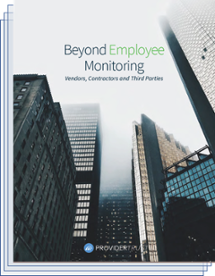OIG Compliance Program Guidance
Identify Fraud and Risk Areas
According to the OIG’s Supplemental Compliance Guidance for Hospitals, one of the first steps for hospitals is recognizing areas that can lead to fraud or risk. These could include the following: submission of accurate claims and information, referral statutes, payments to reduce or limit services, the Emergency Medical Treatment and Labor Act (EMTALA), substandard care, relationships with federal healthcare beneficiaries, HIPAA Privacy and Security Rules, and billing Medicare or Medicaid substantially in excess of usual charges.
Being Organized and Detail-Orientated
According to the OIG, hospitals with an organizational culture that values compliance are better able to prevent, detect, and correct problems. A clear statement of detailed and substantive policies and procedures and the periodic evaluation of their effectiveness is at the core of an OIG compliance plan.
In other words, be organized enough to show your organization has clear policies and procedures to the prosecutor should you ever run into errors or problems. Being able to demonstrate a successful/effective compliance program can result in reductions in fines and penalties.
Communicating and Education
Educating employees on how to be compliant, where to go, and what to do about non-compliance are critical to maintaining an effective compliance program. Once each team member is aware of how to identify and communicate areas of non-compliance, then senior management should be able to quickly identify and explain areas of improvement as well as any changes that are necessary to be made.
A key determination of an effective compliance program is if employees feel confident in management to communicate, listen, and investigate in a timely manner.
“Helping the People Who Help the People”
A great compliance program puts people first and heavily involves building positive relationships. Because compliance involves a team effort – coordination, honesty, and trust are vital to success.
Every effective compliance program starts with the commitment to compliance and to the people by the hospitals governing body and senior management. Having a C-suite that is on board with building a quality compliance culture is so important for each individual to see compliance principles be demonstrated on a daily basis – it starts from the top!
The ability and willingness to help others is such a unique quality that should be celebrated by compliance professionals. It’s important to try and remember that each person “wants to do the right thing”. Support and accountability should be at the forefront of reminding each employee why they matter and where they fit in delivering excellent care.
Check out our latest resources!
Written by Michael Rosen, ESQ
Michael brings over 20 years of experience founding and leading risk mitigation businesses, receiving numerous accolades such as Inc Magazine’s Inc 500 Award and Nashville Chamber of Commerce Small Business of the Year.











